
Quake is a first-person shooter game developed by id Software and published by GT Interactive. The first game in the Quake series, it was originally released for MS-DOS, Microsoft Windows, and Linux in 1996, followed by Mac OS and Sega Saturn in 1997 and Nintendo 64 in 1998.

Midtown Madness is a 1999 racing game developed by Angel Studios and published by Microsoft for Microsoft Windows. The demo version was released in April 1999. Two sequels followed, with Midtown Madness 2 released in September 2000 and Midtown Madness 3 released in June 2003 for the Xbox. The game is set in Chicago; the object is for the player to win street races and obtain new cars.

Moto Racer, mislabeled as Moto Racer Gold, is an arcade style motorcycle racing game developed by Delphine Software International and published by Electronic Arts for Microsoft Windows and PlayStation. The game was originally to be published by BMG Interactive, but after BMG closed down its U.S. operations it sold the publication rights to Electronic Arts. Critics hailed the game as the first outstanding arcade-style racer to appear on PC, and the PlayStation version in turn was called a strong conversion in reviews.

Need for Speed II is a 1997 racing video game released for PlayStation and Microsoft Windows. It is a part of the Need for Speed series and is the second installment, following The Need for Speed.

Need for Speed: High Stakes, released as Need for Speed: Road Challenge in Europe, is a 1999 racing video game developed by EA Canada and EA Seattle and published by Electronic Arts for the PlayStation and Microsoft Windows. It is the fourth game in the Need for Speed series and a follow-up to Need for Speed III: Hot Pursuit. The game features more realistic elements than its predecessors and introduced a damage system that allows cars to take damage when colliding with objects, affecting their appearance and performance. It also introduced a series of economy-based tournaments, awarding players with a cash prize that can be spent on repairing, purchasing, or upgrading cars for subsequent races. The game's Hot Pursuit mode, which was introduced in Hot Pursuit, was expanded with more options, allowing players to control police pursuits attempting to stop racers.

Terminal Velocity is a 1995 shooter video game originally developed by Terminal Reality and published by 3D Realms for DOS and Windows 95, and MacSoft for Mac OS. It is an arcade-style flight combat game, with simpler game controls and physics than flight simulators. It is known for its fast, high-energy action sequences, compared to flight simulators of the time.
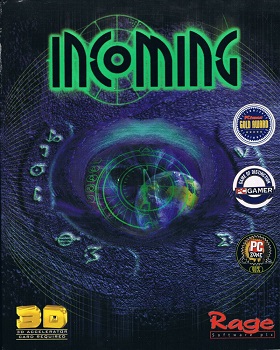
Incoming is a 3D shooter video game developed and published by Rage Software. The game was first released for Microsoft Windows in mid-1998, and was followed by a Dreamcast version, which was released in Japan on December 17, 1998, in Europe on October 14, 1999, and in North America on September 15, 1999. Set in the near-future of 2009, the game primarily revolves around controlling vehicles and turrets to fight alien invaders of Earth in one of the campaign modes, the arcade mode, and with or against another player. Some levels include brief real-time strategy segments.

Dominion: Storm Over Gift 3 is a military science fiction real-time strategy video game developed by Ion Storm, published by Eidos Interactive, and released for Microsoft Windows in 1998. The game was originally developed as a spin-off of the mech simulation game G-Nome by 7th Level. Ion Storm acquired both Dominion and its lead designer, Todd Porter, from 7th Level for completion.

Monster Truck Madness is a racing video game developed by Terminal Reality and published by Microsoft. It was released in North America on September 9, 1996. The game has twelve monster trucks and tasks the player with beating computer opponents. Checkpoints, multiple hidden shortcuts, and interactable objects commonly appear in the tracks. In the garage, the player modifies the truck to account for terrain surfaces. Online multiplayer is accessed with a modem, a local area network (LAN), or TCP/IP.
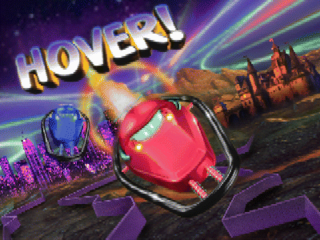
Hover! is a video game that combines elements of the games bumper cars and capture the flag. It was included on CD-ROM versions of the Microsoft Windows 95 operating system. It was a showcase for the advanced multimedia capabilities available on personal computers at the time. It is still available from Microsoft. The game will not run on earlier versions of Windows.
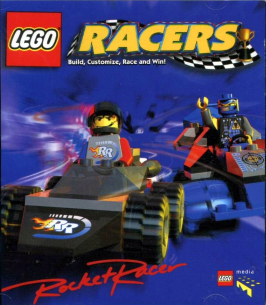
Lego Racers is a 1999 Lego-themed kart racing video game developed by High Voltage Software and published by Lego Media for Microsoft Windows, followed by console ports to Nintendo 64 and PlayStation. Set in the fictional "Legoland" universe, the single-player mode follows various minifigure characters competing in a racing competition created by a fictional racing champion called Rocket Racer.
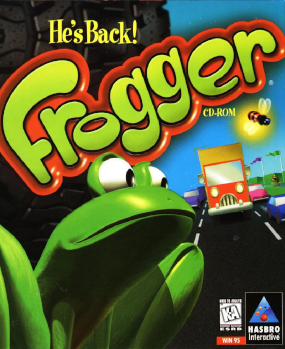
Frogger, also called Frogger: He's Back!, is a 1997 action game developed by Sony Computer Entertainment Europe and published by Hasbro Interactive for the PlayStation. A port to Windows was released the same year. It is a remake and expansion of Konami's 1981 arcade game of the same name. It has large maps, 3D graphics, and new gameplay moves. Critical reaction was mixed, with frequent criticism of the gameplay, controls, and difficulty, but the graphics were received positively. It was a commercial success, becoming one of the best-selling PlayStation games.

Formula 1 is a 1996 racing video game developed by Bizarre Creations and published by Psygnosis for PlayStation and Microsoft Windows. It is the first installment in Psygnosis' Formula One series.
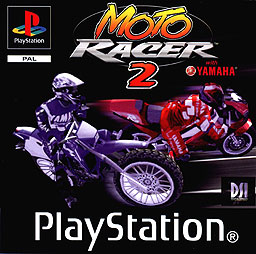
Moto Racer 2 is a motocross racing game developed by Delphine and published by Electronic Arts for PlayStation and Microsoft Windows. It is part of the Moto Racer series, and is the sequel to Moto Racer.

Switchball is a 3D action-puzzle game, made by the Swedish developer Atomic Elbow, which was released for Microsoft Windows on June 26, 2007, on Xbox Live Arcade for the Xbox 360 on November 7, and on PlayStation Network for the PlayStation 3 on September 17, 2009. A HD version of the game was released on Steam on May 17, 2021.
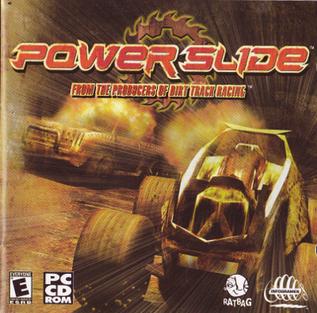
Powerslide is a post-apocalyptic Microsoft Windows racing game by Australian developer Ratbag Games. It was released in Australia, United States and Europe in 1998. Powerslide was praised for its graphics and AI in particular. A sequel, Powerslide: Slipstream, was in development as of 2004, but Ratbag couldn't find a suitable publisher, and shortly after the company was shut down. Powerslide was re-released on GOG.com in 2012.

Airfix Dogfighter is a flight-combat video game for Microsoft Windows; developed by Unique Development Studios and Paradox Entertainment, published by EON Digital Entertainment, it was released in late 2000 in North America and Europe. 15 planes are at the players' disposal to re-enact World War II in a 1950s home.
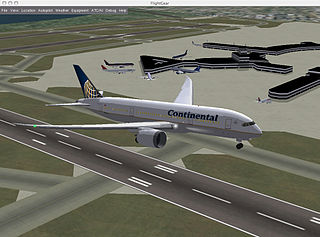
A flight simulation video game refers to the simulation of various aspects of flight or the flight environment for purposes other than flight training or aircraft development. A significant community of simulation enthusiasts is supported by several commercial software packages, as well as commercial and homebuilt hardware. Open-source software that is used by the aerospace industry like FlightGear, whose flight dynamics engine (JSBSim) is used in a 2015 NASA benchmark to judge new simulation code to space industry standards, is also available for private use. A popular type of flight simulators video games are combat flight simulators, which simulate combat air operations from the pilot and crew's point of view. Combat flight simulation titles are more numerous than civilian flight simulators due to variety of subject matter available and market demand.
Sky Target is a 1995 arcade game by Sega. A rail shooter featuring a number of planes including the default F-14D Super Tomcat, it is best remembered for its semi-official connection to Sega's earlier hit After Burner. Although never billed as a sequel, its overt similarities to the 1987 classic were nonetheless referenced in official promotional materials and recognized by the media. Plus, it features a revised version of the "After Burner" music theme within its soundtrack.

SkyDrift is a 2011 airplane racing video game developed by Digital Reality. It was self-published by the developer on the Microsoft Windows and PlayStation 3 platforms. The Xbox 360 version was published by Bandai Namco Partners.




















